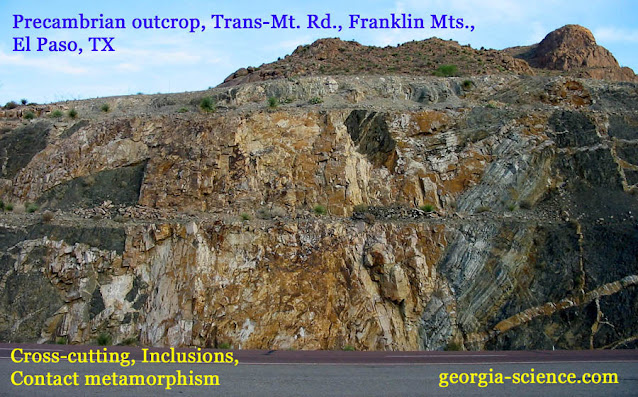Lurching down Memory Lane, when one memory triggers another...(don't know why sometimes.)
Twenty years ago, while still working for the Georgia Geologic Survey, we were redirected to complete a USGS-funded stream sediment study across the southernmost tier of Georgia counties, from the Alabama line to the Atlantic Coast, perhaps comprising 20% of Georgia's 159 counties.
If memory serves me correctly, it was to study the trace minerals, i.e., minerals which contained rare elements, within the stream sediments we collected. There were EPD employees from various branches. (Though it was during January and February, it was a welcome break from the routine for a few weeks.)
The particular memory was of one of my GGS coworkers being paired up with a Biologist from another EPD branch. Now as I have been a beer can collector, as well as a general packrat for decades, I sometimes pick up old stuff while in the field. Nothing unusual there, though I think this particular coworker didn't have any "side hobbies" as I do and I gathered that he "looked down his nose" at my "low brow" collecting interests.
Perhaps as some sort of karmic payback, my coworker was paired up with a female Biologist that had an interesting "side hobby". She like to gather fresh (or relatively fresh) roadkill, take her treasures home, boil them down to retrieve the bones and reassemble the skeletons.
I was using an EPD pickup truck with a hinged bed-cover, while my coworker was using some sort of EPD passenger car. This is important, as while my sediment samples (and any old beer cans and such) went into the bed of the pickup, the Biologist's dead animals went into the trunk of the car (into a Styrofoam cooler, which isn't air-tight). Over the course of each week, she picked up several dead critters that added their "aromas" to the ambiance of the car, resulting in the need to keep the windows open.
Each morning, we gathered at the motel as I gave them their maps and suggested collecting locales for the day (on a grid pattern). When this coworker complained about his field partner's collecting habits, I couldn't help but ask him which he preferred, my old rusty beer cans or her dead animals, which triggered an epiphany for him, as he gave me a look which said: "Do you even have to ask?". (I was no longer the craziest person he knew. I think he did manage to get her assigned to another vehicle for the last week or so.)




